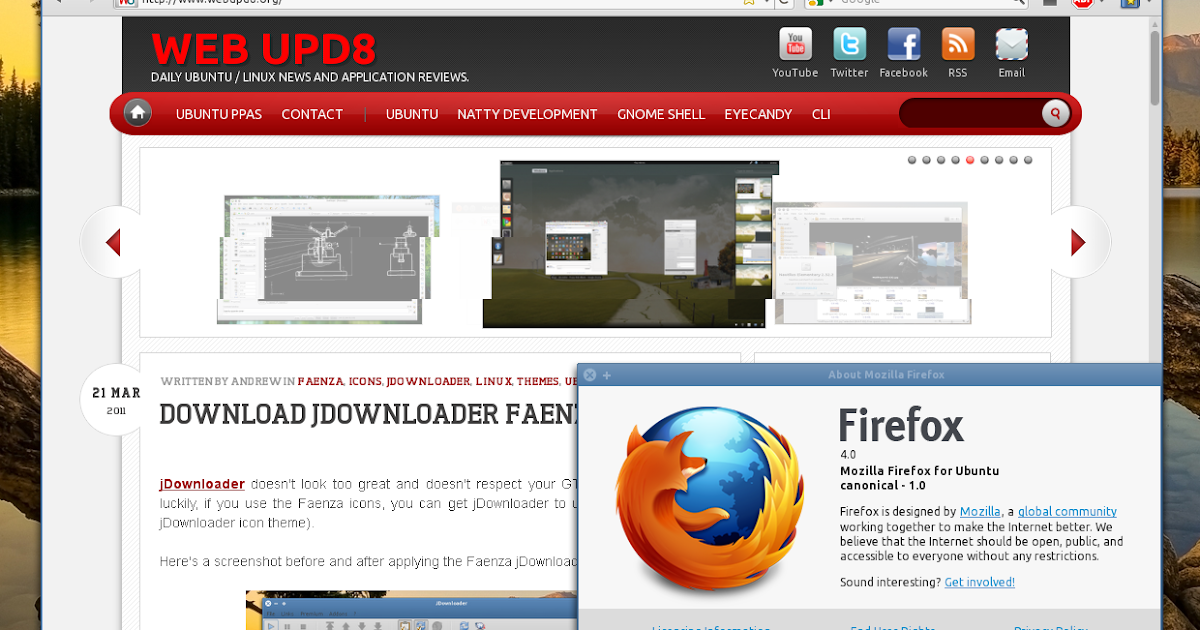Ubuntu is a free and open source operating system based on the Debian GNU/Linux distribution, developed by Ubuntu Foundation. Ubuntu is composed of many software packages, the vast majority are distributed under a free software license. The only exceptions are some proprietary hardware drivers which are needed to safeguard evry individual freedom to use the OS. Oct 11, 2010 Download Ubuntu 10.10 (Maverick Meerkat) CD ISO / DVD Images last updated October 11, 2010 in Categories Linux desktop, Ubuntu Linux The latest version of the popular Linux desktop distribution Ubuntu 10.10 has been released and available from the official project web site.
Unity 7
systemd status in Ubuntu 14.10

Linux Kernel changes
- zram is considered stable with Linux 3.14; zram received LZ4 compression support;
- stable support for Intel Broadwell CPU graphics (3.14);
- the SCHED_DEADLINE scheduling class was added to the Linux scheduler in version 3.14 of the Linux kernel mainline;
- faster resume from suspend;
- EFI mixed mode support: 64-bit kernels can be booted from 32-bit firmware (with Linux 3.15);
- various Nouveau improvements, including initial NVIDIA Maxwell GPU support, initial GK20A and GK110B GPU support as well as support for allowing to change the frequency of the GPU from the BIOS predefined values for nv40, nvaa, and nve0 clock types;
- Radeon performance improvements through improved APU power management have been enabled in some APUs;
- Intel Cherryview graphics support;
- NVIDIA Tegra PRIME support;
- Broadwell support for the Intel P-State driver (3.16);
- various other improvements to audio and sound, btrfs and ext4 improvements, better support for newer laptops and much more.
Applications / packages


Other changes
Other notable changes in Ubuntu 14.10 include:
- Improved hybrid graphics support:
- nvidia-prime and gpu-manager now support GDM (these changes were backported to older Ubuntu versions, but without the GDM patch that allows this);
- added support for 'gpumanager_uxa' and 'gpumanager_modesetting' boot parameters, so that there is an option to force NVIDIA Optimus systems (that don't work well with Intel/SNA) to use either Intel/UXA or modesetting);
- allow RandR offloading even without bbswitch;
- Netflix now works without any extra plugins in Ubuntu 14.10 (the changes were backported to Ubuntu 14.04), the only requirement being Google Chrome;
- Pidgin comes with Unity support thanks to a new Unity integration plugin (can be enabled from the Pidgin Plugins > Unity Integration) - this includes (both are optional) Messaging Menu integration and Unity Launcher unread messages/conversations
- Applications using client side decorations (header bars) look better under Unity with Ubuntu 14.10, but they are still not fully supported: for instance, CSD applications have no shadow, but at least the header bar looks as it should now and the windows can be resized.
| Client side decoration apps (not installed by default) under Unity in Ubuntu 14.10 |
Download Ubuntu 14.10
Ubuntu 10.10 Iso
Are you using Ubuntu 14.10 already (what's your experience with it so far?) or do you plan to upgrade?Java Sun Manual Download
Also check out our article on the latest Xubuntu, Ubuntu GNOME, Lubuntu and Kubuntu 14.10.Mayur·Published · UpdatedThe Ubuntu Manual Team has released a comprehensive guide for Ubuntu OS, named as “Getting Started with Ubuntu 10.10”. This official manual is of great help for beginners and those who never had their hands on a Linux system before. The guide is specially for Ubuntu 10.10 (Maverick Meerkat), is available for Free in more than 52 languages.
This 158-page detailed PDF manual has a decent layout and covers essential tips to help new users get quickly started with Ubuntu. The guide is simple to follow, with step-by-step instructions and plenty of screenshots, giving a brief intro of Ubuntu, covering basics of Ubuntu such as getting and installing the OS. It shares various How-Tos, lets you understand the desktop and how to work with Ubuntu. Furthermore, it has tips on managing the hardware and software, troubleshooting guide to resolve any problems. There is also a section ‘Advanced Topics’ for advanced users that gives introduction to the Terminal, basic security concepts, system updates, Firewall, and much more.
- Easy to understand – our manual has step by step instructions and is jargon-free
- A picture is worth a thousand words – lots of screenshots to show you how to do tasks
- All in one place – conveniently located in one file, so you don’t have to look all over the web for help
- Progressive learning curve – start with the basics, and learn as you work through each chapter
- Dozens of languages – translated into more than 52 languages, including localized screenshots
- CC-BY-SA licensing – download, modify, reproduce and share as much as you like
- No cost – our documents are all written by Ubuntu community members and there is no charge to use them
- Printer friendly – we have a version optimized for printing to save the trees
- Troubleshooting section – to help you solve common Ubuntu problems quickly
A printed version of Ubuntu manual is also available to buy online for $9.50 only.
Download Ubuntu 10.10 Official Manual [FREE]
Ubuntu 17.10 Download Iso
via [Softpedia]